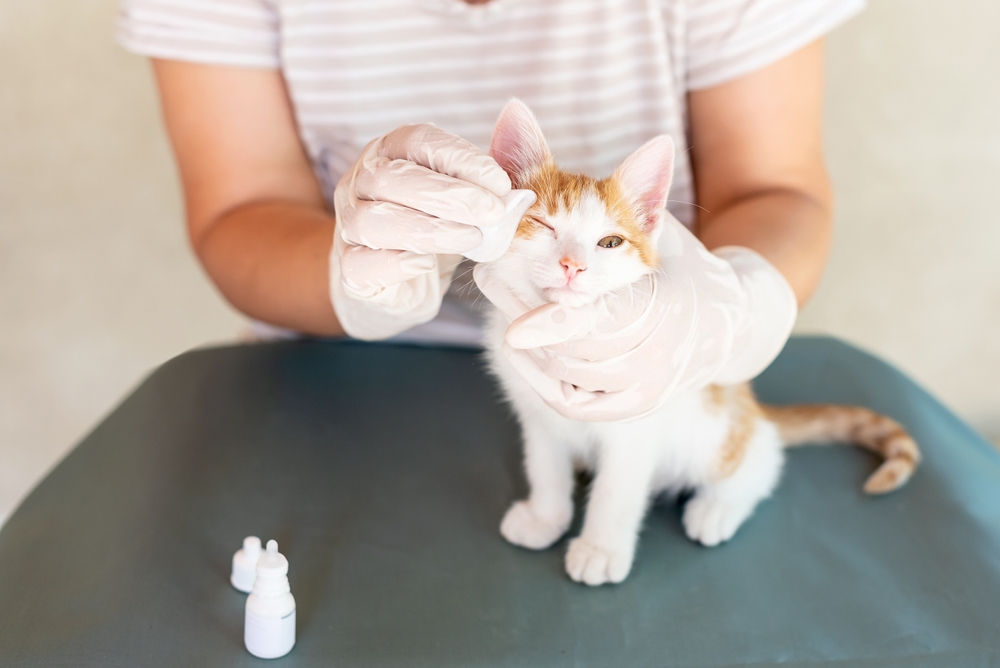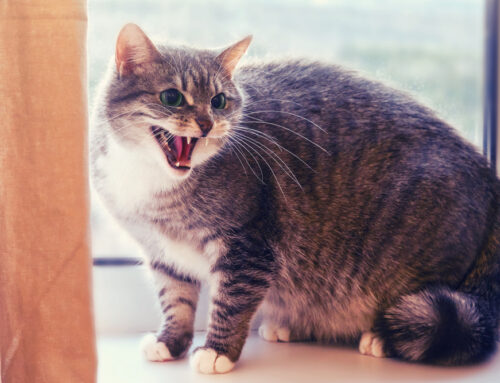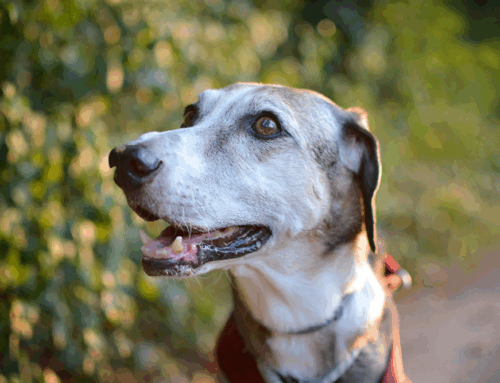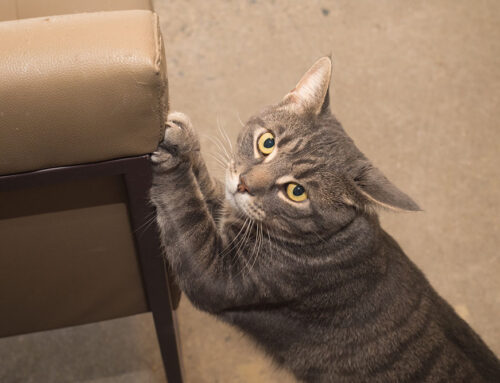At Cane Bay Veterinary Clinic in Cane Bay, South Carolina, we understand that your pet’s eye health is a crucial part of their overall well-being. Much like humans, animals rely heavily on their eyesight for navigating their environment, communicating with others, and enjoying a high quality of life. Early detection of eye problems in pets can prevent significant discomfort, vision loss, and severe complications down the line.
Many common eye conditions progress gradually, making it easy for pet owners to overlook early signs. However, some issues can escalate quickly, requiring urgent veterinary attention to prevent permanent damage. This guide is designed to educate pet owners on common eye conditions in dogs and cats, help you recognize urgent eye emergencies, and explain available diagnosis and treatment options, as well as long-term eye care strategies.
Concerned About Your Pet’s Eye Health?
Contact Cane Bay Veterinary Clinic
Common Eye Conditions in Pets
Conjunctivitis (“Pink Eye”)
Conjunctivitis is an inflammation of the conjunctiva, the membrane covering the white part of the eyes and the inside of the eyelids. Pets with conjunctivitis often exhibit symptoms such as redness, swelling, and a discharge that may be clear, yellow, or green. You might also notice your pet frequently squinting or pawing at their eyes.
Causes:
- Bacterial or viral infections
- Allergies or environmental irritants
- Underlying eye disease
Treatment:
- Antibiotic or anti-inflammatory eye drops
- Identification and management of the underlying cause
For more information, read about Conjunctivitis in Dogs and Cats.
Corneal Ulcers
Corneal ulcers are scratches or erosions on the eye’s surface. Symptoms include squinting, excessive tearing, cloudiness, and sensitivity to light.
Causes:
- Trauma (e.g., scratches from play or rubbing the eye)
- Dry eye, infections
- Foreign objects in the eye
Treatment:
- Mild ulcers: Antibiotic drops and pain relief
- Severe ulcers: Surgical intervention, such as corneal grafting
Learn more from the Corneal Ulcer Guide for Pet Owners.
Cataracts (Cloudy Eyes in Older Pets)
Cataracts involve the clouding of the lens, leading to impaired vision. Symptoms include a hazy or milky appearance in the eye and signs of vision loss, such as bumping into objects and difficulty navigating familiar spaces.
Causes:
- Genetics
- Diabetes
- Aging
Treatment:
- Mild cataracts: Monitoring and managing underlying causes
- Severe cataracts: Surgery to potentially restore vision
For more details, read about Hereditary Eye Diseases in Dogs.
Glaucoma (Increased Eye Pressure)
Glaucoma is characterized by a buildup of pressure inside the eye, causing pain and potential vision loss. Symptoms include red, swollen eyes, vision loss, dilated pupils, and squinting.
Causes:
- Primary: Genetic predisposition (common in certain breeds like Cocker Spaniels and Basset Hounds)
- Secondary: Resulting from trauma, inflammation, or lens luxation
Treatment:
- Medications to lower eye pressure
- Surgical options, such as laser therapy or eye removal in severe cases
For further reading on lens luxations, check out dislocation of the lens in dogs and cats.
Entropion (Inward Rolling Eyelids)
Entropion occurs when the eyelid rolls inward, causing the eyelashes to rub against the cornea, which can be quite irritating. Symptoms include watery eyes, redness, squinting, and excessive blinking.
Causes:
- Genetic factors (common in breeds like Shar-Peis, Bulldogs, and Persian cats)
Treatment:
- Surgery to correct eyelid positioning
For more information, visit Entropion in Pets.
Urgent Eye Emergencies in Pets
If your pet exhibits any of the following signs, seek immediate veterinary care to prevent permanent damage:
- Sudden blindness or frequent bumping into objects
- Bulging or sunken appearance of the eye
- Blood in or around the eye
- Severe squinting and signs of pain
- Thick, yellow-green discharge
For more details on eye emergencies, visit Ocular Emergencies in Pets.

Diagnosing Eye Conditions in Pets
Veterinarians use various diagnostic tools to accurately identify eye conditions in pets:
- Fluorescein Staining: Detects corneal ulcers by highlighting areas of damage.
- Tonometry: Measures eye pressure to check for glaucoma.
- Ophthalmoscopy: Examines the retina and optic nerve for any abnormalities.
- Schirmer Tear Test: Assesses tear production to diagnose dry eye conditions.
Explore more about Common Eye Conditions in Animals.
Treatment Options for Pet Eye Problems
Medical Treatments
- Eye drops and ointments (antibiotics, anti-inflammatories)
- Oral medications for infections and pain relief
- Lubricating drops for managing dry eye conditions
Surgical Treatments
- Eyelid correction surgery for entropion
- Lens removal surgery for cataracts
- Enucleation (eye removal) for severe, painful cases
For more about Clinical Approaches to Ocular Tumors.
Preventing Eye Problems in Pets
To help prevent eye issues in your pet, consider these proactive measures:
- Schedule regular veterinary eye exams, especially for at-risk breeds.
- Keep pet hair trimmed around the eyes to prevent irritation.
- Avoid letting pets stick their heads out of car windows to reduce exposure to debris.
- Use pet-safe eyewash to flush out irritants.
- Monitor for early signs of eye problems, such as redness, discharge, and squinting.
Read more about Feline Vision Problems.
Maintaining your pet’s eye health is vital to their overall well-being. Early detection and treatment of eye problems can prevent permanent damage and ensure your pet remains comfortable and healthy. Regular veterinary check-ups and proactive care are key components in preserving your pet’s vision for years to come.
Worried About Your Pet’s Eye Health? Schedule an Appointment







Leave A Comment